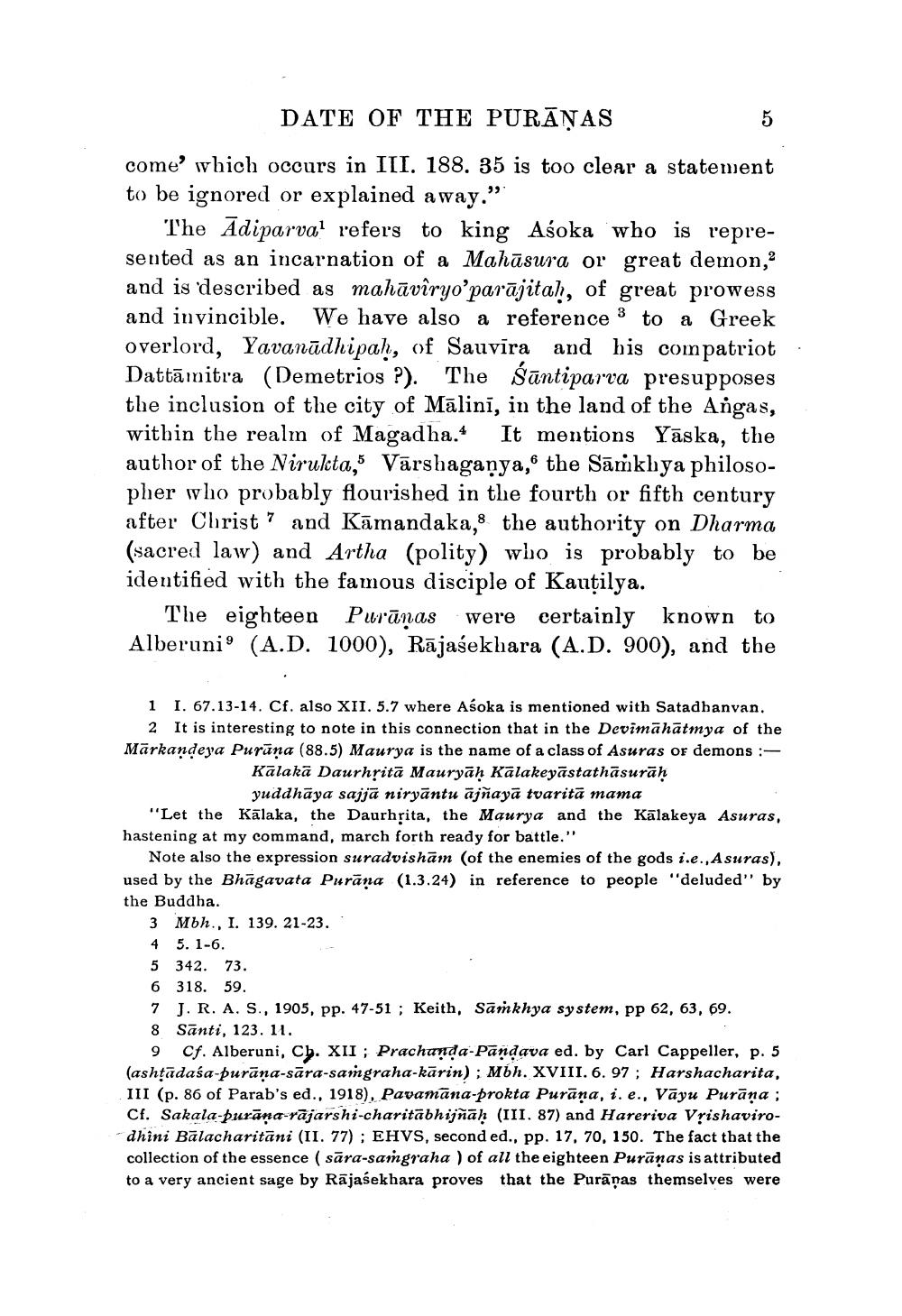________________
DATE OF THE PURANAS
come' which occurs in III. 188. 35 is too clear a statement to be ignored or explained away."
The Adiparva refers to king Aśoka who is represented as an incarnation of a Mahasura or great demon,2 and is described as mahaviryo'parajitaḥ, of great prowess and invincible. We have also a reference to a Greek overlord, Yavanadhipaḥ, of Sauvīra and his compatriot Dattamitra (Demetrios ?). The Santiparva presupposes the inclusion of the city of Malini, in the land of the Angas, within the realm of Magadha.* It mentions Yaska, the author of the Nirukta, Varshaganya, the Samkhya philosopher who probably flourished in the fourth or fifth century after Christ and Kamandaka, the authority on Dharma (sacred law) and Artha (polity) who is probably to be identified with the famous disciple of Kautilya.
5
The eighteen Purānas were certainly known to Alberuni (A.D. 1000), Rajasekhara (A.D. 900), and the
1 I. 67.13-14. Cf. also XII. 5.7 where Aśoka is mentioned with Satadhanvan. 2 It is interesting to note in this connection that in the Devimāhātmya of the Markandeya Purana (88.5) Maurya is the name of a class of Asuras or demons :Kalaka Daurhṛitā Mauryāḥ Kālakeyāstathāsurāḥ yuddhaya sajjā niryāntu ājñayā tvaritā mama
"Let the Kalaka, the Daurhṛita, the Maurya and the Kalakeya Asuras, hastening at my command, march forth ready for battle."
Note also the expression suradvisham (of the enemies of the gods i.e., Asuras), used by the Bhagavata Purana (1.3.24) in reference to people "deluded" by the Buddha.
Mbh., I. 139. 21-23.
5. 1-6.
3
4
5 342. 73.
6 318. 59.
7 J. R. A. S., 1905, pp. 47-51; Keith, Samkhya system, pp 62, 63, 69.
8 Santi, 123. 11.
9 Cf. Alberuni, Ch. XII; Prachanda-Pandava ed. by Carl Cappeller, p. 5 (ashṭādasa-purāṇa-sāra-saṁgraha-kārin); Mbh. XVIII. 6. 97; Harshacharita, III (p. 86 of Parab's ed., 1918), Pavamana-prokta Purāņa, i. e., Vāyu Purāņa; Cf. Sakala-purana-rajarshi-charitabhijñaḥ (III. 87) and Hareriva Vṛishavirodhini Balacharitani (II. 77); EHVS, second ed., pp. 17, 70, 150. The fact that the collection of the essence (sara-saṁgraha) of all the eighteen Purāņas is attributed to a very ancient sage by Rajasekhara proves that the Purāņas themselves were




